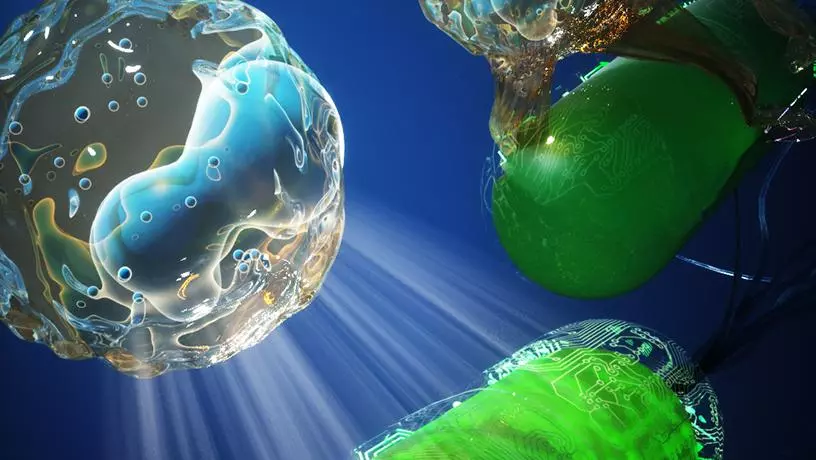Scientists exploring a novel but highly promising avenue of cancer treatment have developed a type of "invisibility cloak" that helps engineered bacteria sneak through the body's immune defenses. The result is more powerful delivery of anti-cancer drugs and shrinking of tumors in mice, with the scientists hopeful the approach can overcome toxicity issues that have plagued these techniques so far.
Traditional forms of cancer treatment – radiotherapy, chemotherapy and immunotherapy – each have their own strengths when it comes to combating tumors, and what's known as therapeutic bacteria could bring its own set of skills into the mix. Bacteria itself can have powerful anti-tumor effects, but genetic engineering could allow it to take on entirely new capabilities, including releasing specific compounds or carrying potent anti-cancer drugs.
There are a number of challenges in using bacteria for this purpose, however, with the issue of toxicity chief among them. Living bacteria can grow rapidly in the body, and because the body's immune system sees them as a threat, too many can trigger an extreme inflammatory response.
”In clinical trials, these toxicities have been shown to be the critical problem, limiting the amount we can dose bacteria and compromising efficacy," said Columbia University's Jaeseung Hahn, who co-led the research. "Some trials had to be terminated due to severe toxicity.”
Addressing this toxicity problem would mean finding (or engineering) bacteria that can evade the body's immune system and safely make it to a tumor to fulfill their anti-cancer potential. Hahn's team has made new inroads in this space by turning to sugar polymers called capsular polysaccharides (CAP), which naturally coat bacterial surfaces and protect them from immune attacks.
“We hijacked the CAP system of a probiotic E. coli strain Nissle 1917,” said Tetsuhiro Harimoto, the study’s co-lead author. “With CAP, these bacteria can temporarily evade immune attack; without CAP, they lose their encapsulation protection and can be cleared out in the body. So we decided to try to build an effective on/off switch.”
To do so, the scientists engineered a version of the bacteria to include a small molecule called IPTG, which alters the surface and influences the way the bacteria interacts with the immune system. This in effect creates a molecular "cloak" that encapsulates the bacteria and prevents immune attacks, and by fine-tuning the amount of IPTG onboard the team found they could control how long the bacteria survive in the blood.
“What’s really exciting about this work is that we are able to dynamically control the system,” said Tal Danino, who co-led the study. “We can regulate the time that bacteria survive in human blood, and increase the maximum tolerable dose of bacteria."
The team calls its creation inducible CAP, or iCAP, and in mouse tumor models they demonstrated it could be used to increase the tolerable dose of bacteria by 10 times. Over time, the IPTG wore away and iCAP lost its protective cloak, which enabled it to be safely cleared away in other parts of the body to keep toxic side effects to a minimum. The scientists then engineered a version of iCAP that produces an anti-tumor toxin, which was shown to shrink tumors in colorectal and breast cancer models more effectively than a control experiment.
“Bacterial cancer therapy holds unique advantages over conventional drug therapy, such as efficient targeting of the tumor tissue and programmable drug release," said Kam Leong, study author. "Potential toxicity has been limiting its full potential. The cloaking approach presented in this study may address this critical issue.”
The research was published in the journal Nature Biotechnology.
Source: Columbia University




